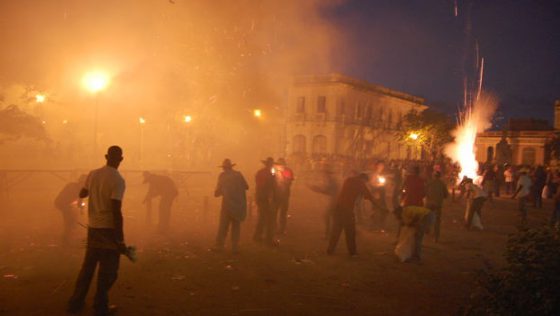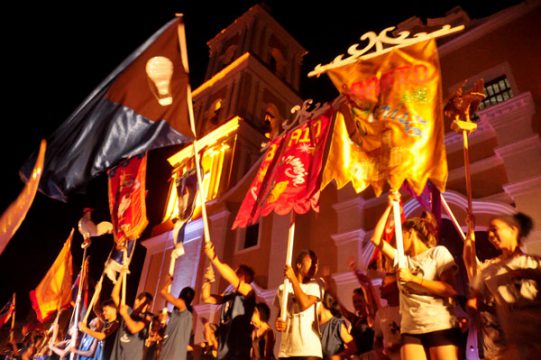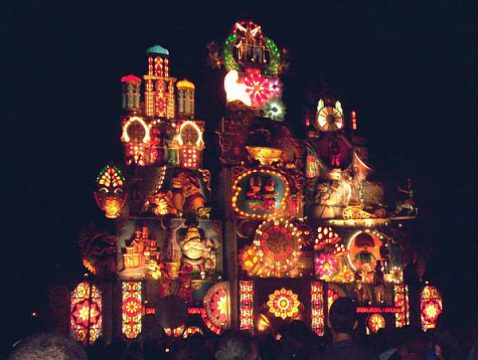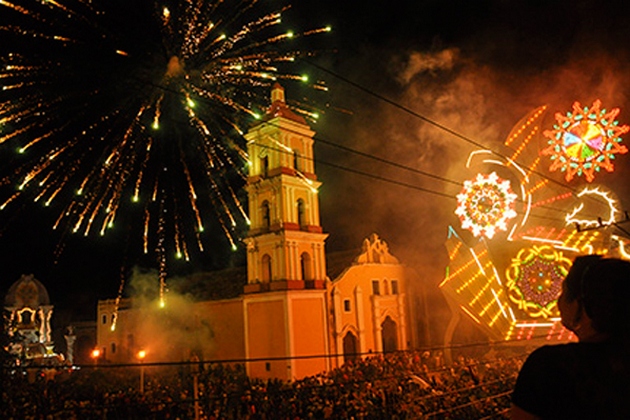The “Parrandas de Remedios” in Villa Clara and “Las Charangas de Bejucal” in Mayabeque are two of the oldest Cuban festivities that bring joy to the people of the island every year. Dances, songs, rhythms and rivalry have outlived century after century in the traditions built from these popular events, which take part around Christmas with a series of coincidental features:
Both “Fiestas” emerged as religious celebrations around December 24th during the Spanish ruling.
The origin of “Las Charangas” are related to “la misa del gallo” (“the Shepherd’s Mass”) on December 24th, when slaves’ were given the day off and used to perform African rhythms and dances outside of the church.
The Parrandas, on the other hand, were created by 1820 when a priest named Francisco Vigil de Quiñonez (Francisquito) hired children, who in the fresh noons of days among the 16th and 24th December summoned the settlers to mass on a fuss. The noise on the streets and pilgrimage to the holy house were the prelude of one of the most picturesque celebrations in Cuba.

Rivalry, bands and music are a common factor
Two bands “fight” for the best performer prize in these festivities in which African traditions are deeply rooted.
The Charangas compete with “La Ceiba de Plata” (before “La Musicanga”) symbolized by the color Blue and a Scorpion and “La Espina de Oro” (Before “Los Malayos”) branded in the red and the rooster.
The two rival groups in Remedios are “El Carmen” and “San Salvador”.

Both celebrations honor and imitate popular characters
Gregorio Quin, his son Eustaquio and Francisquito are the most common personified figures in Remedios while la Macorina, La Mujiganga, la Culona and el Yerbero are Bejucals’.
Floats and Fireworks
The construction of Floats by each gang is kept secret until the day of the parade. In many cases spies working for the opposite side leak the details of the themes but in general, the majestic colors, dancing and costumes can only be witnessed during the feasts.
Floats and Fireworks are the most attractive shows of both celebrations in which Cubans and foreigners recall the origin of Rumba and other Cuban-African rhythms.

For culture enthusiasts, street celebrations will always be a way of connecting with Cuba and its people. If you are staying with us in Havana or Cayo Santa Maria this Christmas, think no longer, join the party!

